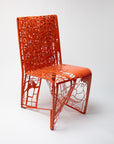
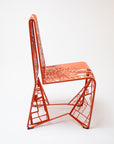
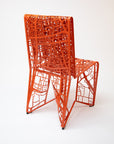
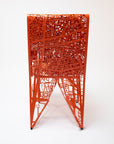

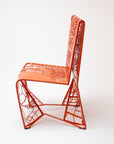
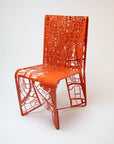
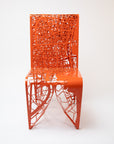

Aluminum Chair, Doha - Prototype (Red Orange)
This is a one-of-a-kind early prototype. Prototypes are sold as-is and have imperfections from testing and display. They are not guaranteed to withstand regular use and are sold to be displayed as art.
This Aluminum Chair prototype features four maps showcasing how Doha has evolved over the past 200 years. This prototype is finished in Red Orange.
Material: Aluminum
Dimensions: 18½in L x 18in W x 36¾in H
Weight: 14.2lbs
Color: Red Orange
Prototypes are one-of-a-kind pieces that were handcrafted during our earliest days of design development. They are truly unique, fine art objects that can be shipped to your desired location upon ordering. Your lead time will be determined upon finalizing logistics.
Made From Four Layers of Historical Maps
OCCUPYING 200 YEARS OF DOHA HISTORY
Top Layer
2023
Doha has transformed into a dynamic global city, where towering skyscrapers and modern infrastructure reflect its rapid evolution. Fueled by natural gas and oil wealth, the city continues to invest heavily in ambitious urban projects, positioning itself at the forefront of innovation.
Hosting major international events, including the FIFA World Cup, has further elevated its global stature. Sustainability plays a growing role in its expansion, with smart city technologies and green urban planning shaping its future. A vibrant expatriate population contributes to Doha’s multicultural fabric, where cutting-edge advancements coexist with deep-rooted Qatari traditions. Museums, universities, and arts districts foster a thriving intellectual and cultural scene, reinforcing Doha’s reputation as a center of knowledge and creativity.
With each milestone, the city cements its influence as a key player in the Middle East.
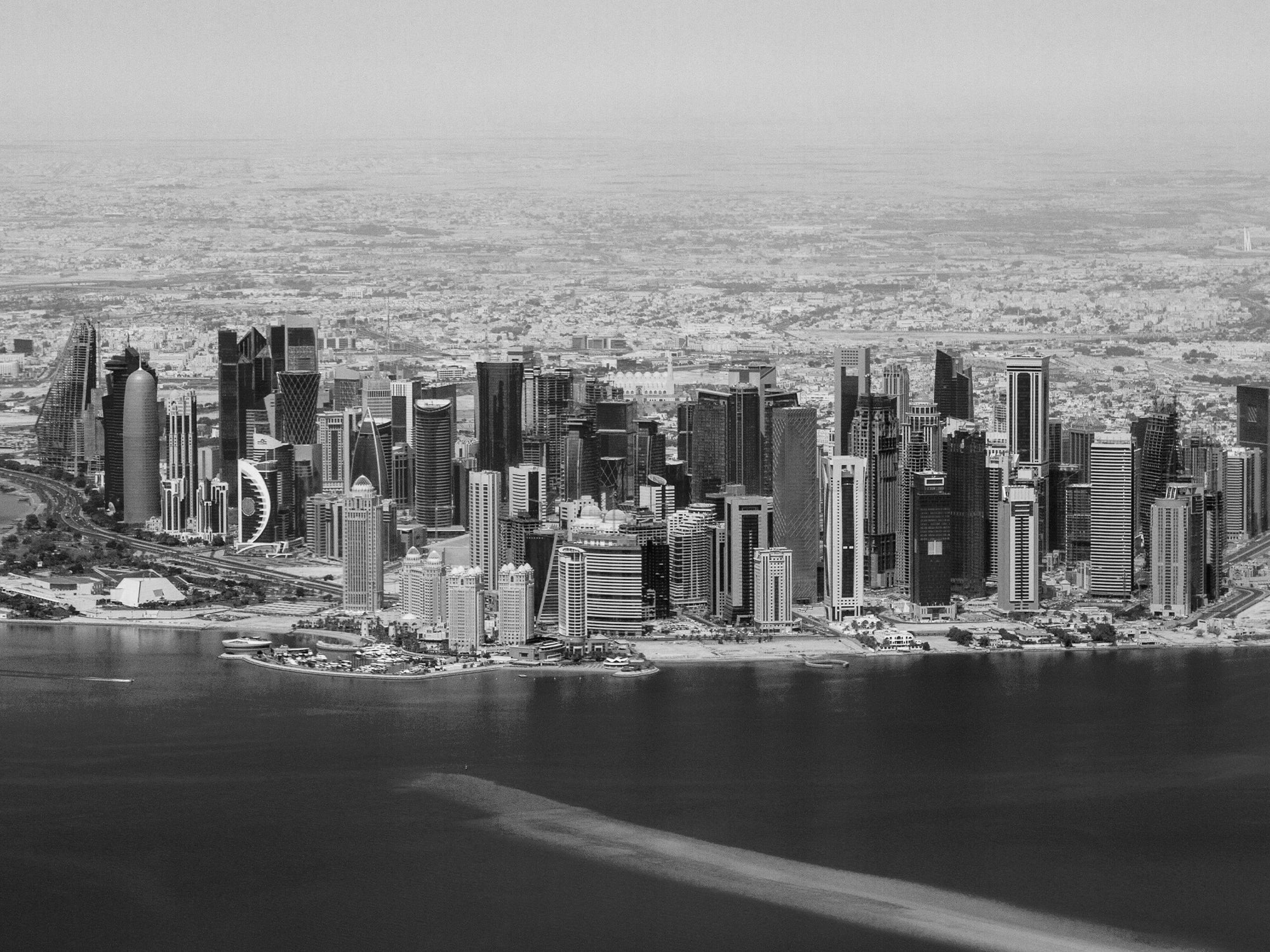
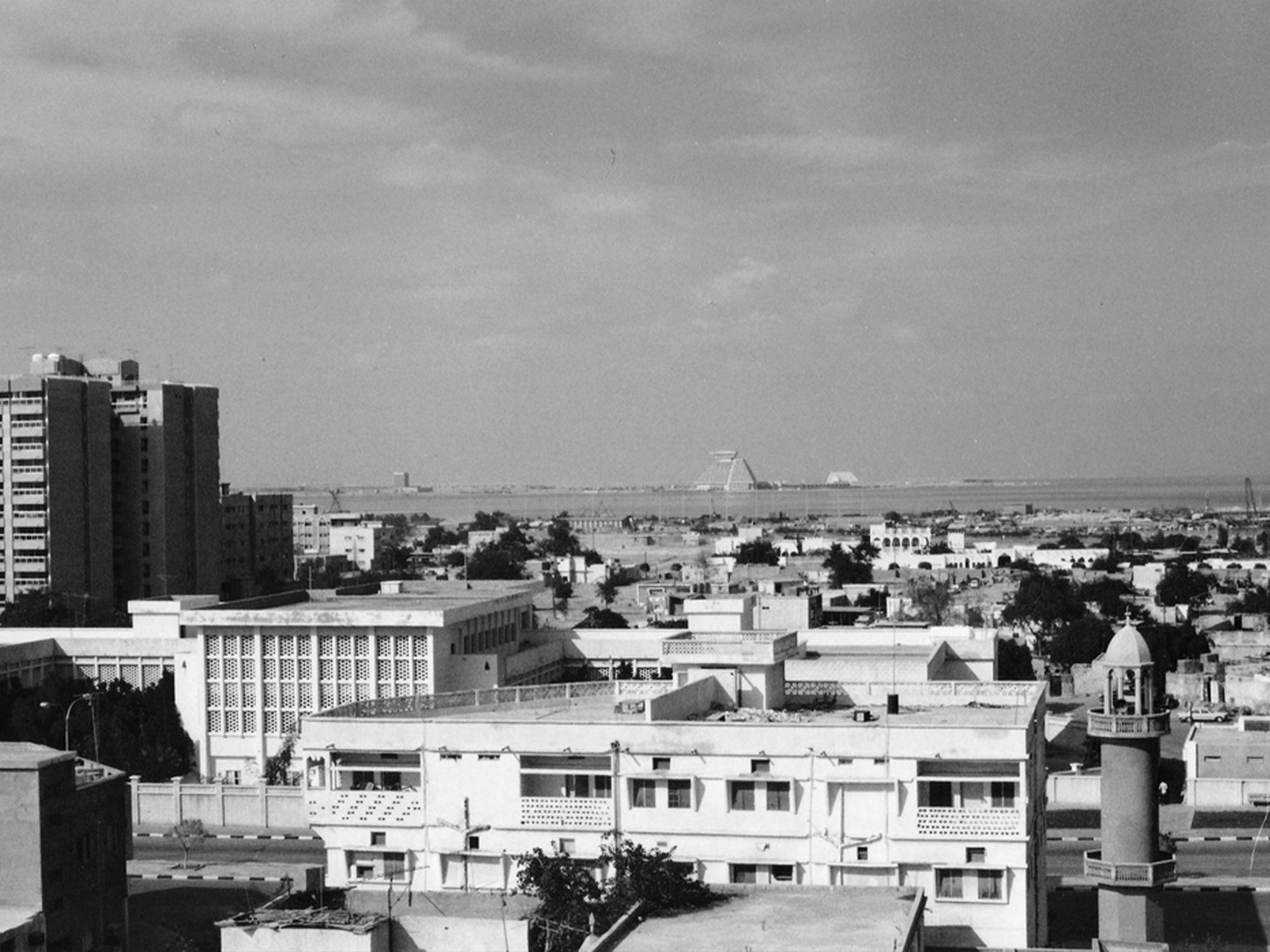
Second Layer
1971
Doha takes center stage as Qatar gains independence, marking a new era of national sovereignty.
Oil wealth fuels rapid urban development, transforming the city’s skyline with modern roads, public services, and infrastructure projects. The economy diversifies beyond fishing and pearling, attracting foreign workers and investment. Traditional souqs and dhow boats coexist with emerging skyscrapers and expanding neighborhoods. The government focuses on strengthening institutions and international relations, establishing Qatar’s position on the global stage. Modernization efforts reshape daily life, yet strong ties to Islamic and tribal heritage remain.
Doha stands at the threshold of becoming a regional power, balancing rapid change with cultural identity.
Third Layer
1939
Doha stands on the brink of change as the discovery of oil promises to transform its economy.
The town remains reliant on traditional industries like fishing and pearling, but oil exploration signals an imminent shift. Infrastructure remains basic, with unpaved roads and simple houses lining the coast.
The Al Thani ruling family continues to lead under tribal governance, balancing tradition with modernization efforts. The potential for newfound wealth sparks interest in development, though the full impact of oil has yet to materialize. As global demand for oil rises, Doha prepares for an economic revolution. The transition from a pearling economy to an oil-driven future is set in motion.
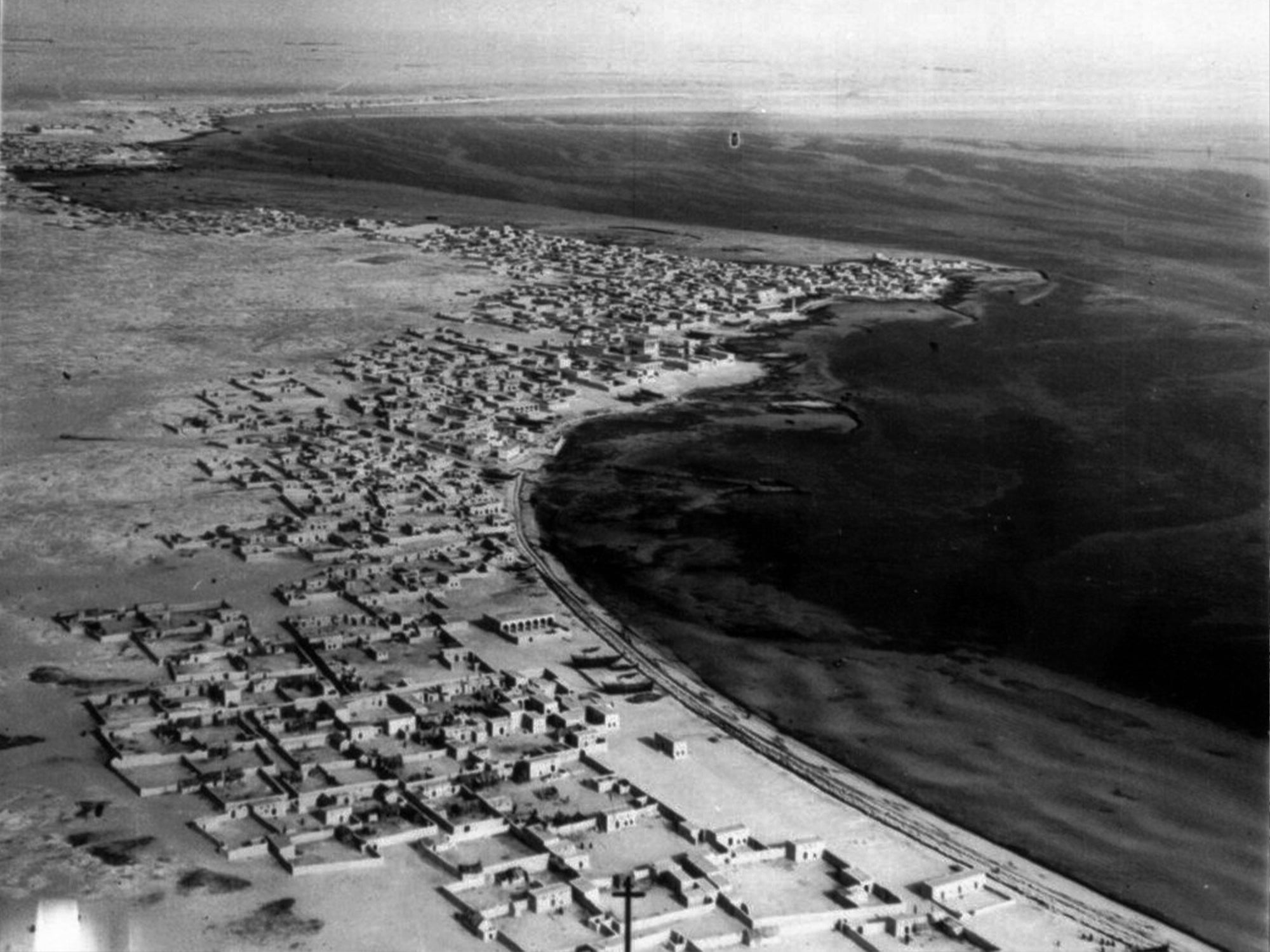
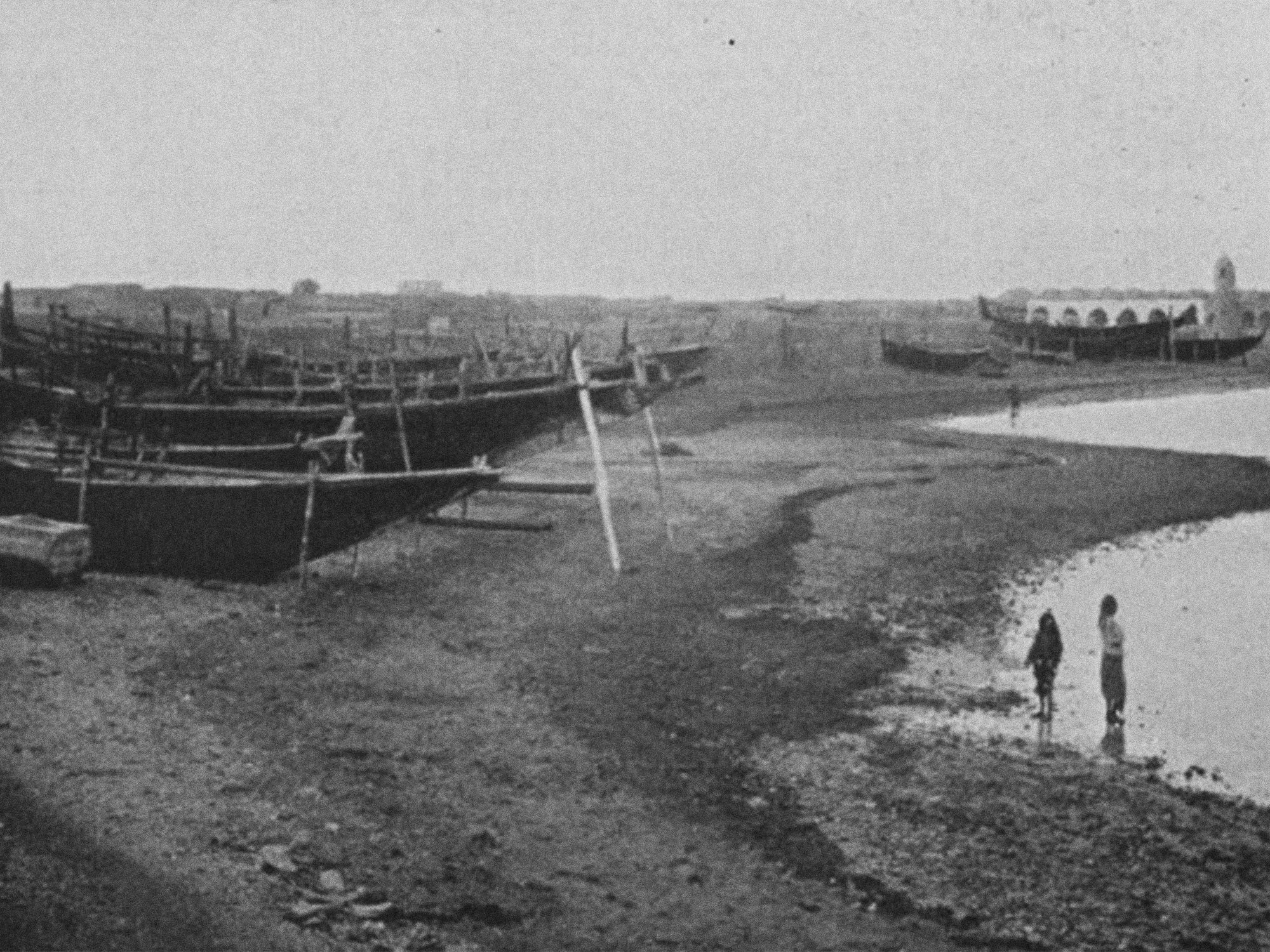
Bottom Layer
1823
Doha emerges as a growing settlement along Qatar’s coast, developing as an offshoot of the established trading port of Al Bidda. Fishing, pearling, and small-scale trade form the backbone of its economy, sustaining a population of Bedouin tribes, merchants, and fishermen.
The ruling Al Thani family begins asserting influence, gradually consolidating power in the region. Social structures revolve around tribal affiliations and Islamic traditions, guiding governance and daily life.
Despite its modest size, Doha’s strategic location facilitates trade across the Arabian Gulf. Economic activity remains tied to seasonal pearling cycles, which dictate prosperity and hardship. The settlement remains small but shows early signs of future importance.











